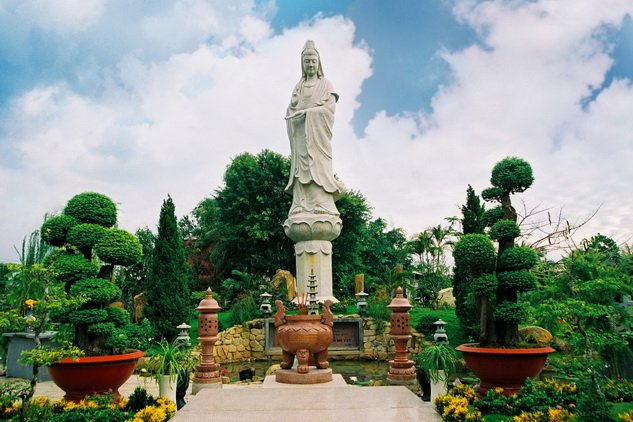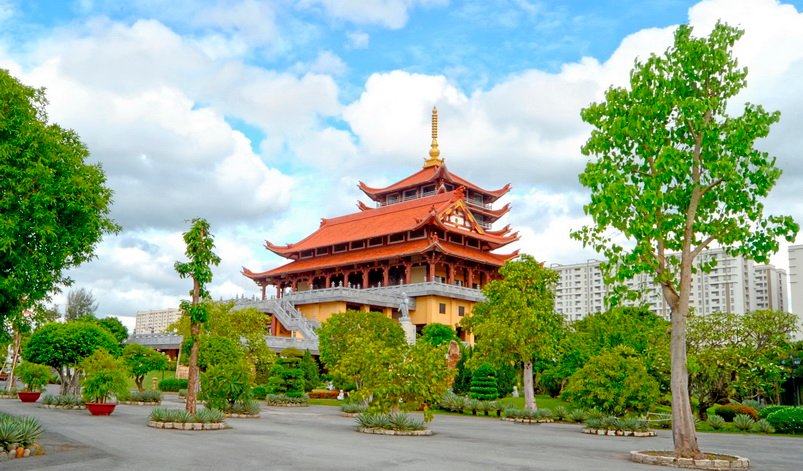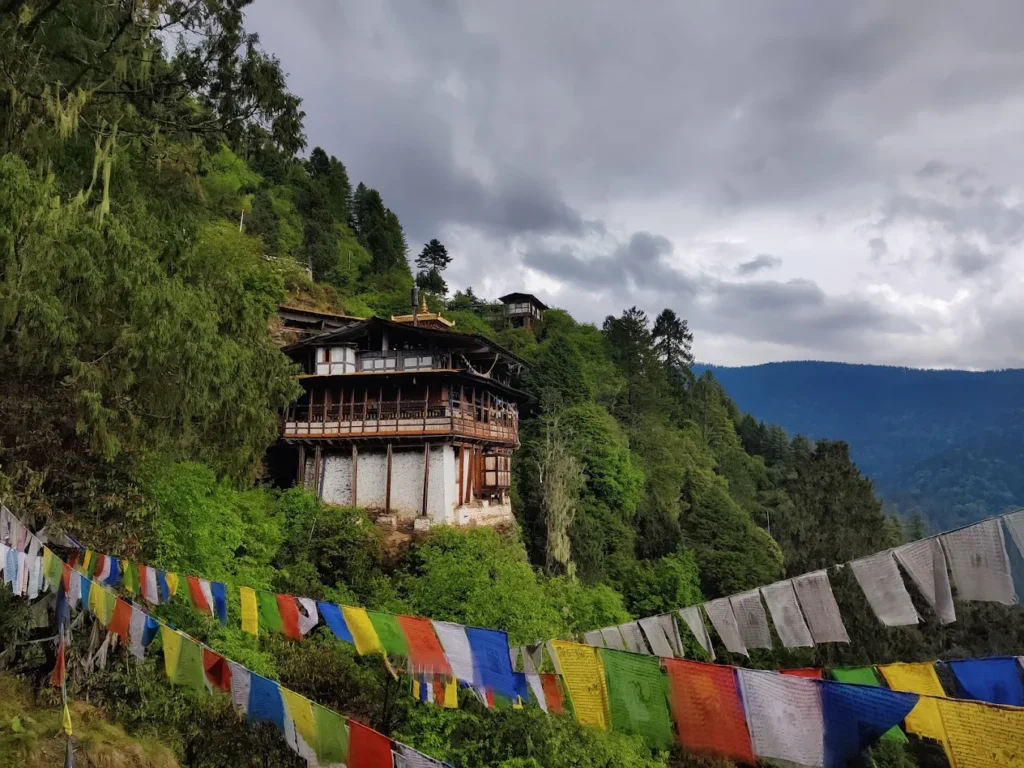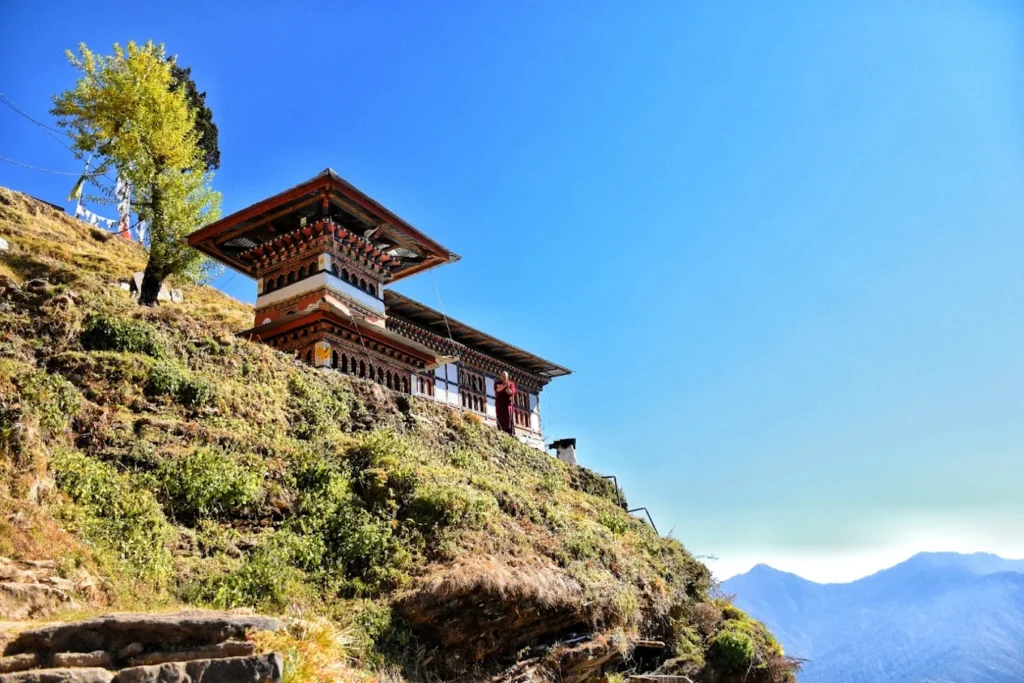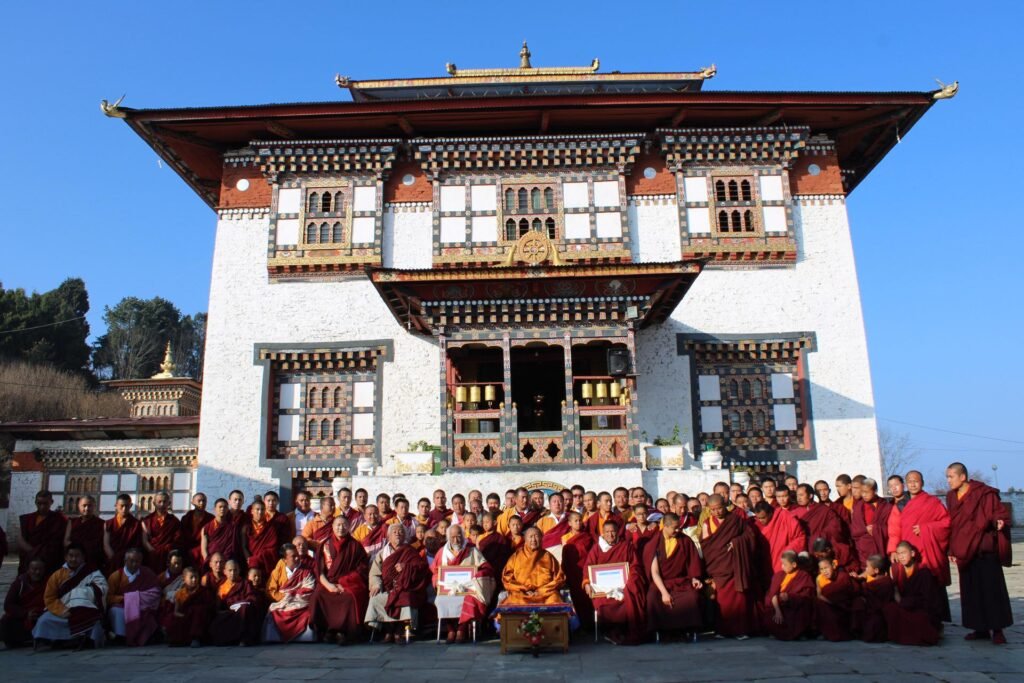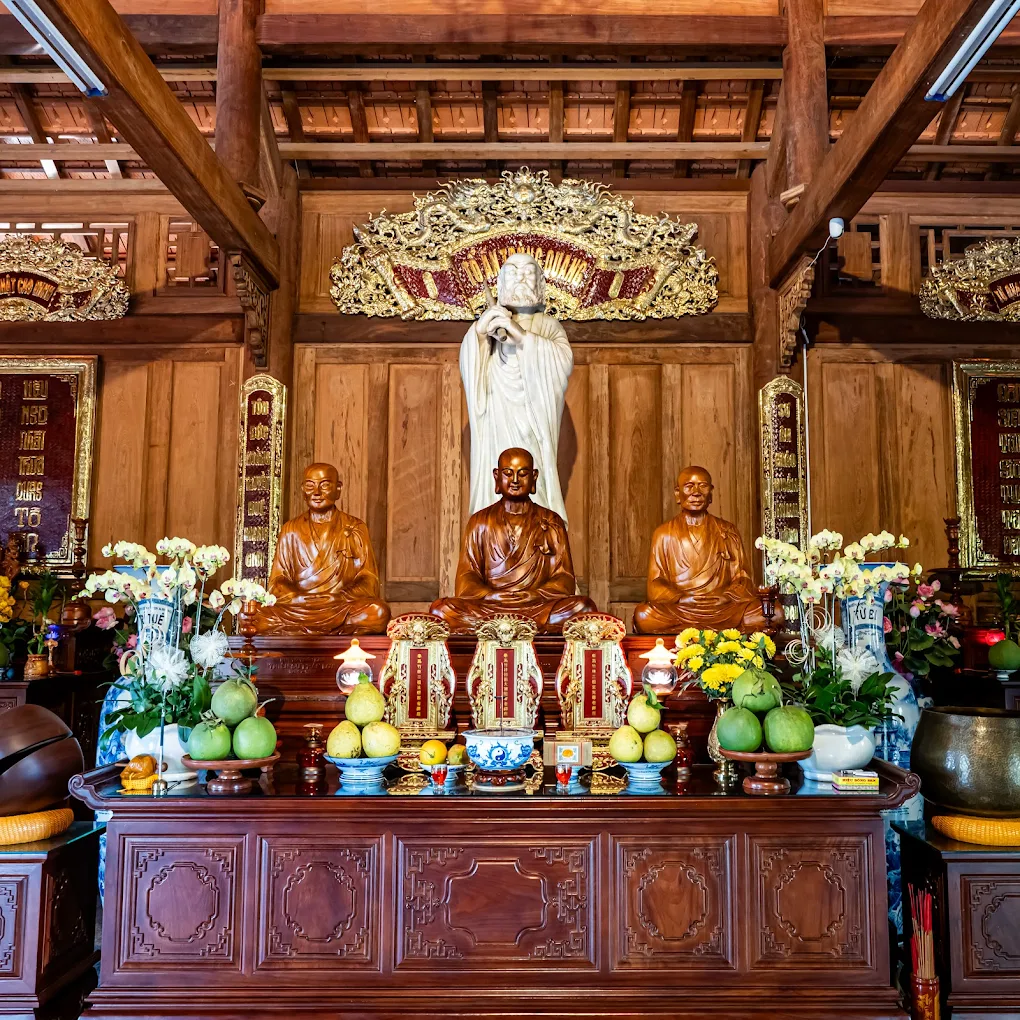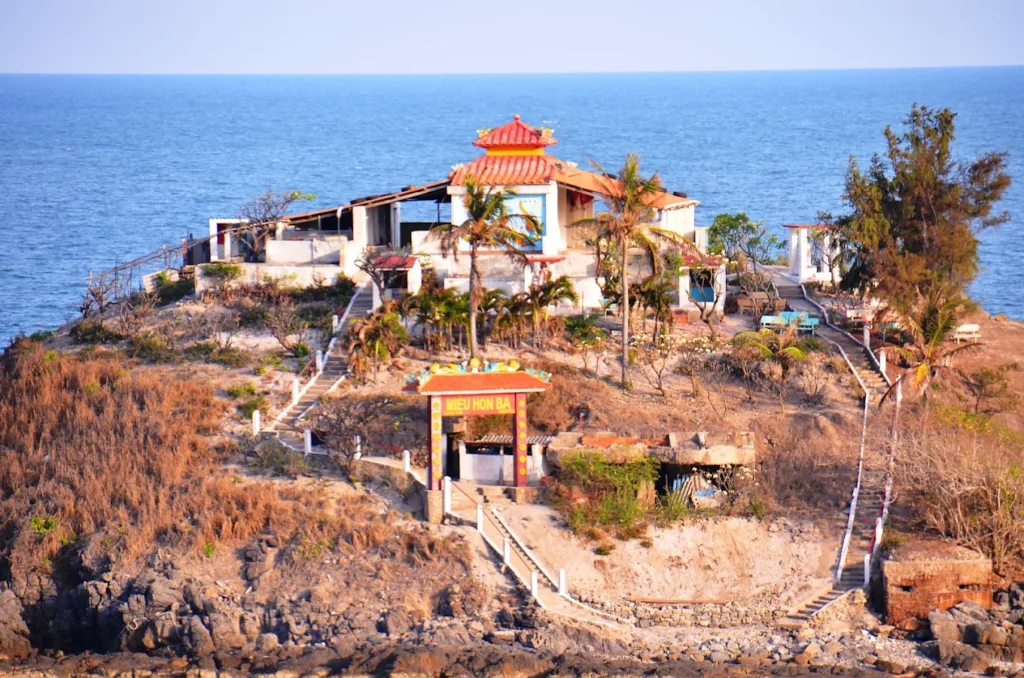Hue Nghiem Pagoda: The Serene Garden Sanctuary
Discover Hue Nghiem Pagoda’s tranquil gardens, Chinese-inspired architecture, and sacred rituals in this District 2, Ho Chi Minh City temple listing.
Hue Nghiem Pagoda’s Spiritual Oasis
Tucked away in District 2’s Thu Duc area, Hue Nghiem Pagoda stands as a serene haven amid Ho Chi Minh City’s urban sprawl. Its lush gardens and majestic Buddha statues create a peaceful retreat for spiritual seekers. This Mahayana Buddhist temple, known for its cultural significance, invites visitors to explore Vietnam’s rich Buddhist heritage.
Essence of Hue Nghiem Pagoda
- Tranquil Retreat: A calming sanctuary with meticulously tended gardens and reflective ponds.
- Buddhist Core: Honors Shakyamuni Buddha, Avalokiteshvara Bodhisattva, and Ksitigarbha Bodhisattva.
- Community Hub: A spiritual center for District 2’s Buddhists, fostering prayer and study.
Historical Legacy
- Founded in 1721: Initially a modest pagoda, rebuilt in 1964 by monk Thich Tho Da to promote Mahayana Buddhism.
- Cultural Anchor: Preserves traditions through renovations, reflecting centuries of devotion.
- Ancient Roots: Named after the Hoa Nghiem Sutra, symbolizing its deep scriptural ties.
Cultural Distinction
- Spiritual Study: A hub for Buddhist learning, hosting lectures and meditation sessions.
- Garden Serenity: Its Japanese-style garden enhances its meditative allure.
- Festival Vibrancy: Draws crowds for Buddhist celebrations, blending faith and culture.
Architectural Elegance
Hue Nghiem Pagoda’s design fuses Chinese and Vietnamese Buddhist aesthetics, creating a striking visual harmony. Its ornate structures and serene garden layout captivate visitors. The temple’s architecture reflects both spiritual depth and artistic craftsmanship.
Distinctive Design
- Chinese Influence: Curved roofs and vibrant colors echo East Asian temple styles.
- Garden Integration: Stone paths and bonsai gardens create a tranquil ambiance.
- Multi-Level Layout: Includes a main hall, tower, and study rooms for monks.
Signature Structures
- Main Hall (Chánh Điện): Features a towering Shakyamuni Buddha statue, flanked by Avalokiteshvara and Ksitigarbha.
- Pho Dong Stupa: A 37-meter tower, adorned with intricate carvings, built in 1972.
- Bell Tower: Houses a resonant bronze bell, used in daily rituals.
Artisanal Craftsmanship
- Wooden Carvings: Intricate panels depicting Buddhist stories adorn the hall.
- Stone Statues: Polished figures of bodhisattvas enhance the garden’s serenity.
- Ceramic Tiles: Vibrant roof tiles with dragon motifs add elegance.
Sacred Practices in Serenity
Hue Nghiem Pagoda’s rituals blend devotion with the calm of its garden setting, offering immersive spiritual experiences. Daily practices and unique ceremonies engage visitors deeply. Festivals transform the temple into a lively center of faith and community.
Sacred Daily Rites
- Morning Chanting: Monks recite sutras at dawn, filling the air with reverence.
- Incense Offerings: Visitors light incense to express gratitude and seek blessings.
- Prayer Gatherings: Open sessions for peace and compassion, led by monks.
Unique Spiritual Practices
- Meditation Classes: Weekly sessions in the garden, focusing on mindfulness and calm.
- Sutra Study: Guided discussions on the Hoa Nghiem Sutra, open to visitors.
- Flower Offerings: Placing orchids or lotuses at altars as acts of devotion.
Vibrant Festival Traditions
- Vesak Celebration: Candle-lit processions and statue bathing honor Buddha’s birth.
- Ullambana Festival: Ancestor veneration with offerings, held in the seventh lunar month.
- Lunar New Year: Festive prayers and lantern displays mark renewal.
Visiting Hue Nghiem Pagoda
Hue Nghiem Pagoda in District 2 is accessible yet requires respect for its strict etiquette. Practical details ensure a smooth visit for tourists and cultural enthusiasts. Adhering to temple rules enhances the sacred experience.
Getting There
- Address: Dang Van Bi Street, Thu Duc District, Ho Chi Minh City, Vietnam.
- Transport Options:
- Bus: Routes to Thu Duc Market; walk 500 meters to the pagoda.
- Taxi/Grab: A short ride from District 1’s center; book via Grab app.
- Motorbike: Follow Vo Nguyen Giap Street to Dang Van Bi; parking available.
- Landmark Note: Look for the pagoda’s tall Pho Dong Stupa near Thu Duc Market.
Visiting Hours and Entry
- Hours: Open daily, 7:00 AM–6:00 PM; rituals peak on weekends and full-moon days.
- Entry: Free; visitors must follow strict dress code.
- Etiquette:
- Wear modest clothing (cover shoulders and knees); gray cover dresses available.
- Photography restricted in the main hall; ask guards for guidance.
- Offer vegetarian items only (flowers, fruit); no meat or alcohol.
Accessibility and Safety
- Accessibility: Limited; steps to the main hall and no ramps; paths may challenge mobility.
- Guides: Monks offer free Vietnamese-language tours; English tours by prior arrangement.
- Safety Tips:
- Secure valuables during busy festival times.
- Stick to marked paths in the garden to avoid uneven ground.
- Emergency contacts: Vietnam Police (113), Medical Assistance (115).
- Amenities: Vegetarian food stalls, restrooms, and nearby Thu Duc Market shops.






